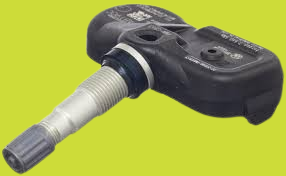
The 2020 Toyota Supra Tpms problems , a highly anticipated sports car revival, has garnered significant attention since its launch in 2020. While praised for its performance and design, it has not been without its share of issues, one of which is the Tire Pressure Monitoring System (TPMS).
Understanding TPMS: A Vital Safety Feature
What is TPMS?
A Tire Pressure Monitoring System (TPMS) is a safety device equipped in modern vehicles that continuously monitors the pressure in each tire. It’s a crucial component for ensuring optimal vehicle performance, fuel efficiency, and driver safety.
How Does TPMS Work?

TPMS systems typically employ sensors located within each tire. These sensors transmit radio signals to a receiver in the vehicle, providing real-time data about tire pressure. When a tire’s pressure falls below a predetermined threshold, the system alerts the driver through a warning light or a message on the dashboard.
Importance of TPMS
Enhanced Safety: Underinflated tires can lead to reduced traction, increased braking distances, and even tire blowouts. TPMS helps prevent these risks by alerting drivers to potential issues before they become critical.
Improved Fuel Efficiency: Properly inflated tires reduce rolling resistance, leading to better fuel economy. TPMS ensures that tires are always at their optimal pressure, saving drivers money at the pump.
Extended Tire Life: Maintaining proper tire pressure helps prevent uneven wear, which can significantly extend the lifespan of your tires.
Types of TPMS Systems
There are two primary types of TPMS systems:
Direct TPMS: This system uses sensors directly mounted within the tire valve stems. They provide accurate pressure readings but can be more expensive to replace if damaged.
Indirect TPMS: This system relies on the vehicle’s anti-lock brake system (ABS) sensors to monitor tire rotation speed. While less precise, it is generally more cost-effective.
Caring for Your TPMS
To ensure your TPMS functions properly:
Regular Inspections: Check your tire pressure regularly, even if your TPMS hasn’t triggered a warning.
Sensor Maintenance: If your vehicle has a direct TPMS system, ensure the sensors are clean and free of debris.
Professional Checkups: Have your TPMS system inspected by a mechanic during routine maintenance.
By understanding the importance of TPMS and taking proper care of your system, you can enhance your vehicle’s safety, performance, and fuel efficiency.
Reported TPMS Problems: A Growing Concern

Tire Pressure Monitoring Systems (TPMS) have become an essential safety feature in modern vehicles. However, despite their benefits, TPMS systems have not been without their issues. Numerous drivers have reported various problems with their TPMS systems, ranging from intermittent sensor failures to false alarms.
One of the most common complaints is sensor malfunctions. These sensors, located within each tire, can become damaged or fail due to a variety of reasons, including road debris, extreme temperatures, or manufacturing defects. When a sensor malfunctions, it can provide inaccurate pressure readings, leading to false alarms or a complete loss of TPMS functionality.
Another frequent issue is false alarms. 2020 Toyota Supra Tpms problems systems may erroneously trigger low-pressure warnings, even when the tire pressure is perfectly normal. This can be caused by factors such as temperature fluctuations, tire tread wear, or even minor manufacturing defects in the sensors themselves. False alarms can be frustrating for drivers and can lead to unnecessary anxiety and inconvenience.
In some cases, TPMS systems may experience delayed responses. This means that the system may be slow to detect and report low tire pressure, potentially compromising safety. Delayed responses can be particularly dangerous in situations where a tire is rapidly losing pressure due to a puncture or other issue.
Additionally, some drivers have reported issues with TPMS sensor compatibility. In certain cases, TPMS sensors may not be compatible with specific tire models or aftermarket rims, leading to inaccurate readings or sensor failures.
It’s important to note that while these problems may occur, they are not universal experiences. Many drivers have reported no issues with their TPMS systems. However, it’s essential to be aware of the potential problems and to take steps to address them if they arise.
Potential Causes of TPMS Problems
Tire Pressure Monitoring Systems (TPMS) are crucial safety features in modern vehicles, but they can sometimes malfunction. Understanding the potential causes of TPMS problems can help drivers troubleshoot and address issues effectively.
One common cause of 2020 Toyota Supra Tpms problems is sensor malfunction. These sensors, located within each tire, can become damaged or fail due to various factors. Road debris, extreme temperatures, or manufacturing defects can all contribute to sensor failure. Damaged sensors may provide inaccurate readings or stop functioning altogether.
Another potential cause is tire pressure variations. Rapid changes in tire pressure, such as those caused by temperature fluctuations or driving conditions, can sometimes confuse the 2020 Toyota Supra Tpms problems system. This can lead to false alarms or inaccurate readings.
Additionally, manufacturing defects can be a factor in 2020 Toyota Supra Tpms problems. Faulty sensors or wiring may be installed during the vehicle’s production, leading to issues from the outset. While this is less common, it is a possibility.
Environmental factors can also play a role in 2020 Toyota Supra Tpms problems malfunctions. Exposure to harsh weather conditions, such as extreme cold or heat, can affect the performance of TPMS sensors. Corrosive substances, such as road salt or chemicals, can also damage the sensors or wiring.
Finally, software issues can sometimes contribute to 2020 Toyota Supra Tpms problems. Outdated or faulty software can cause the system to malfunction, leading to inaccurate readings or false alarms. Keeping your vehicle’s software up-to-date is essential for ensuring proper TPMS functionality.
By understanding the potential causes of 2020 Toyota Supra Tpms problems, drivers can better identify and address issues when they arise. Regular maintenance, careful monitoring, and timely repairs can help prevent TPMS malfunctions and ensure the safety of your vehicle.
The Impact of TPMS Problems on Owners
Tire Pressure Monitoring Systems (TPMS) are essential safety features in modern vehicles. However, when they malfunction, they can have a significant impact on vehicle owners.
One of the primary concerns is safety. Incorrect tire pressure can lead to reduced traction, increased braking distances, and even tire blowouts. These risks are amplified when TPMS systems fail to provide accurate readings or alerts. This can put drivers and passengers at risk of accidents.
2020 Toyota Supra Tpms problems `can also lead to financial burdens. Replacing faulty sensors or repairing the TPMS system can be expensive. Additionally, underinflated tires can reduce fuel efficiency, leading to higher fuel costs.
Beyond safety and financial concerns, 2020 Toyota Supra Tpms problems can also be frustrating and inconvenient. Frequent false alarms can disrupt driving enjoyment and create unnecessary anxiety. Dealing with TPMS issues can be time-consuming and stressful for vehicle owners.
In addition to the direct impacts on owners, 2020 Toyota Supra Tpms problems can also have indirect consequences. For example, if a vehicle with a malfunctioning TPMS system is involved in an accident, the owner may face legal and insurance implications.
Overall, TPMS problems can have a significant impact on vehicle owners. By understanding the potential consequences and taking proactive steps to address issues, drivers can minimize the risks and ensure the safety and reliability of their vehicles.
Addressing TPMS Issues: A Guide for Drivers
Tire Pressure Monitoring Systems (TPMS) are essential safety features, but they can sometimes malfunction. If you’re experiencing 2020 Toyota Supra Tpms problems here are some steps you can take to address the issue:
1. Regular Tire Checks: The first step is to manually check your tire pressure regularly. This will help you verify the accuracy of the TPMS and identify any issues early on. Use a reliable tire pressure gauge to ensure accurate readings.
2. Sensor Calibration: If you’re experiencing frequent false alarms, consider having your TPMS sensors recalibrated. This can help address issues related to sensor sensitivity or calibration errors.
3. Professional Inspection: If the problem persists, consult a qualified mechanic to diagnose and address the underlying issue. They can inspect the sensors, wiring, and other components of the TPMS system.
4. Software Updates: Keep your vehicle’s software up-to-date. Software updates may include improvements to the TPMS system, addressing known issues or bugs.
5. Tire Maintenance: Proper tire maintenance is essential for optimal TPMS performance. Ensure your tires are rotated and balanced regularly, and check for any signs of wear or damage.
6. Sensor Replacement: If a sensor is damaged or faulty, it may need to be replaced. Consult a mechanic to determine if sensor replacement is necessary and to obtain a quality replacement part.
7. Avoid Aftermarket Modifications: Be cautious about aftermarket modifications that could interfere with the TPMS system. Some modifications, such as aftermarket wheels or tires, may not be compatible with the TPMS sensors.
8. Monitor for Warning Signs: Pay attention to any warning signs that may indicate a 2020 Toyota Supra Tpms problems. These can include frequent false alarms, delayed responses, or a completely inoperative system.
9. Consider TPMS Monitoring Devices: If you’re concerned about TPMS reliability, consider using a standalone TPMS monitoring device. These devices can provide additional peace of mind and help you identify issues early on.
While the 2020 Toyota Supra Tpms problems is a remarkable vehicle, 2020 Toyota Supra Tpms problems have been a concern for some owners. By understanding the potential causes and taking proactive steps, drivers can mitigate the impact of these issues and enjoy a safer and more enjoyable driving experience.






